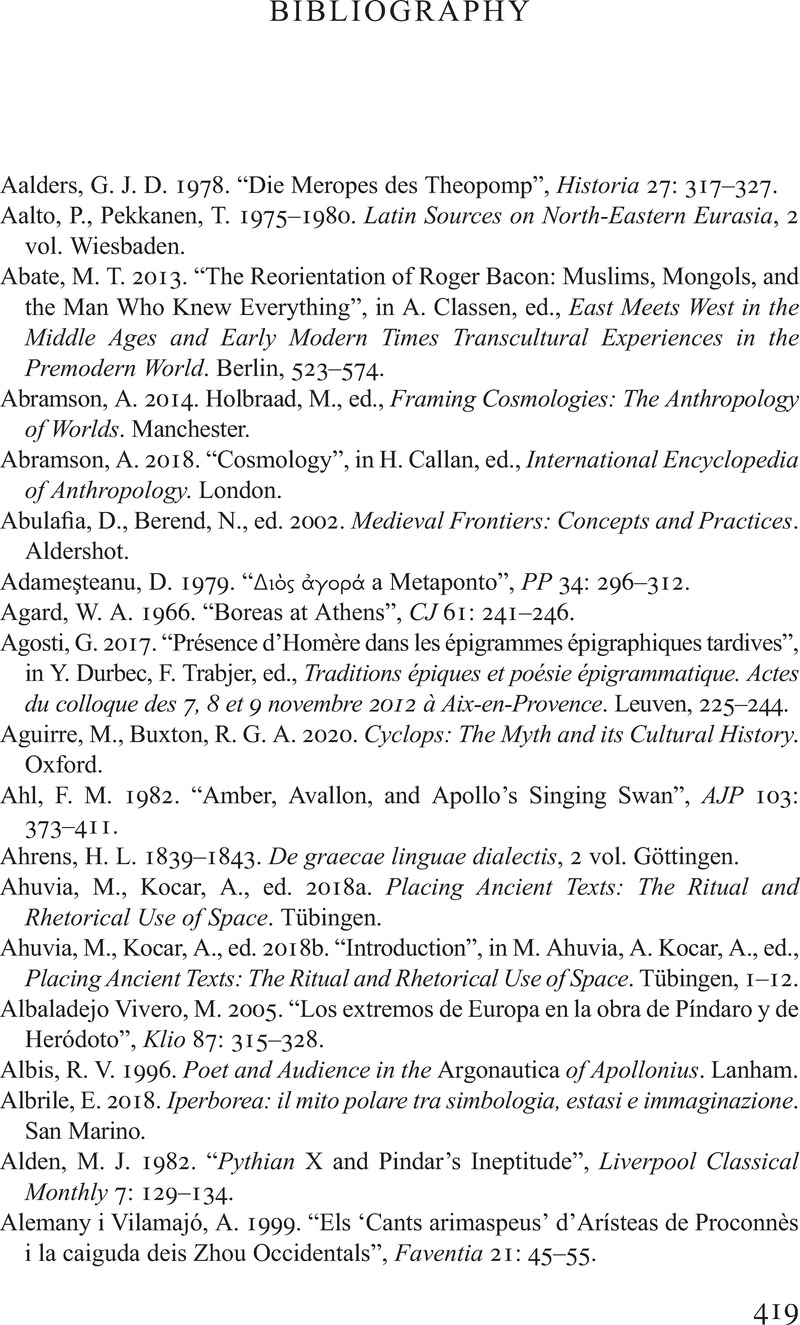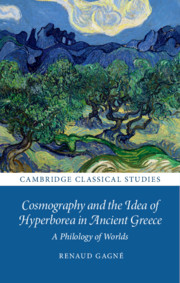Book contents
- Cosmography and the Idea of Hyperborea in Ancient Greece
- Cambridge Classical Studies
- Cosmography and the Idea of Hyperborea in Ancient Greece
- Copyright page
- Contents
- Illustrations
- Acknowledgements
- Abbreviations
- Additional material
- Introduction Cosmography
- Part I Sanctuaries of Cosmography
- Part II Cosmography, Periods and Genres
- Conclusion Further Trajectories
- Glossary
- Bibliography
- Index locorum
- General index
- References
Bibliography
Published online by Cambridge University Press: 08 May 2021
- Cosmography and the Idea of Hyperborea in Ancient Greece
- Cambridge Classical Studies
- Cosmography and the Idea of Hyperborea in Ancient Greece
- Copyright page
- Contents
- Illustrations
- Acknowledgements
- Abbreviations
- Additional material
- Introduction Cosmography
- Part I Sanctuaries of Cosmography
- Part II Cosmography, Periods and Genres
- Conclusion Further Trajectories
- Glossary
- Bibliography
- Index locorum
- General index
- References
Summary

- Type
- Chapter
- Information
- Cosmography and the Idea of Hyperborea in Ancient GreeceA Philology of Worlds, pp. 419 - 520Publisher: Cambridge University PressPrint publication year: 2021

